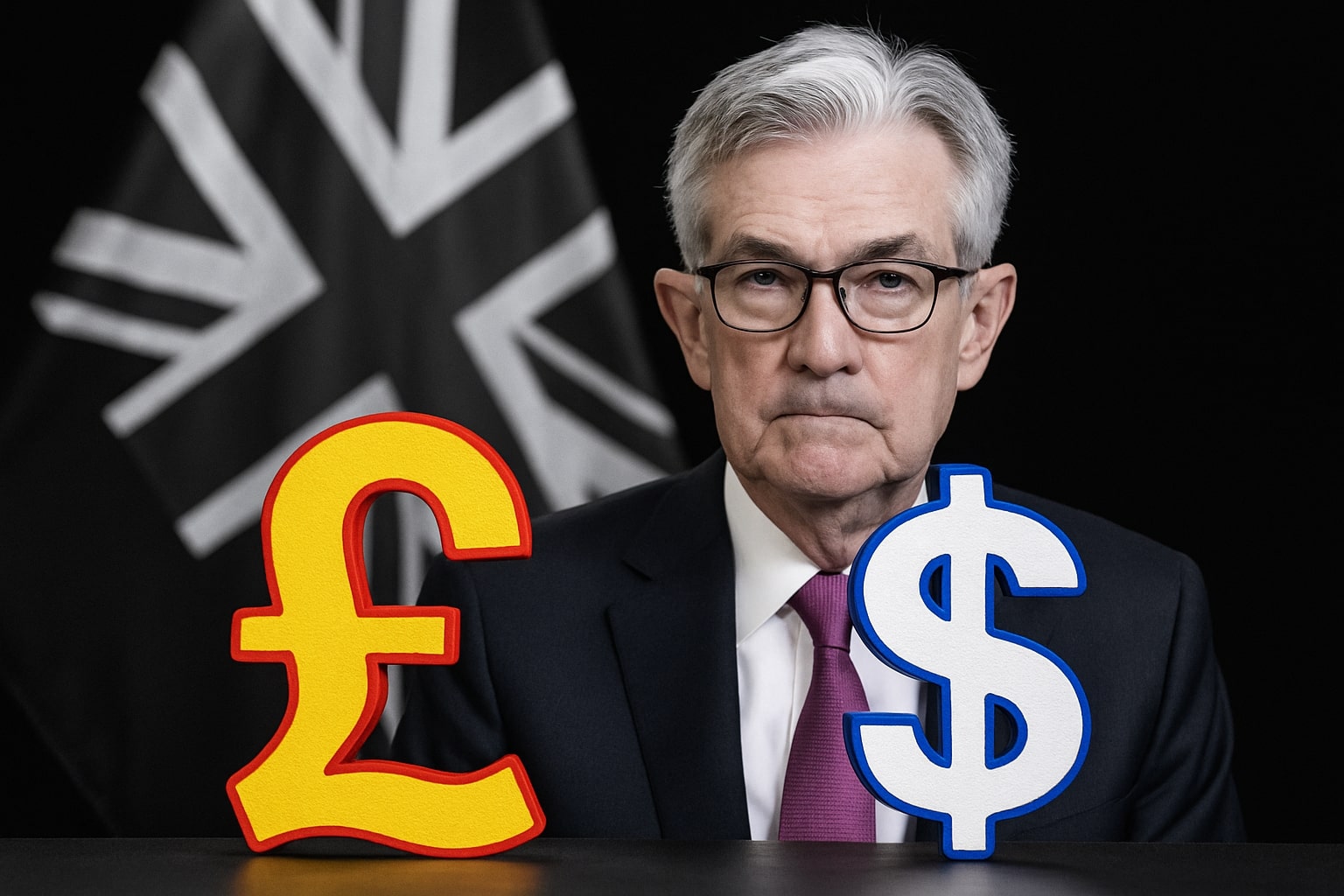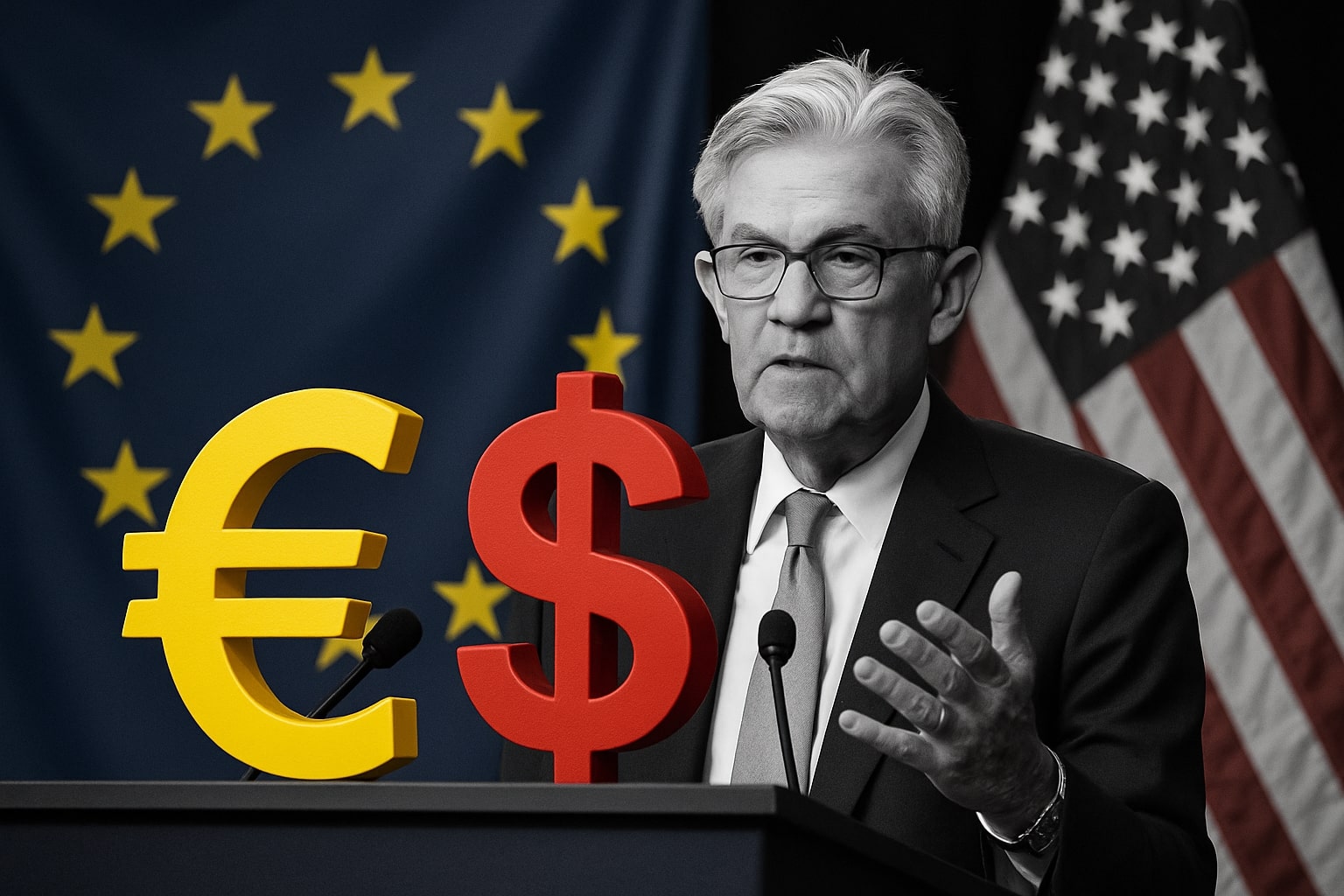Pound Sterling (GBP/USD) Slides to 1.3280 as Dollar Strength and UK Fiscal Strains Deepen Market Pressure
The GBP/USD pair extended its sharp decline this week, tumbling to 1.3280, its lowest level in two months, as a resilient U.S. Dollar Index (DXY) near 99.56 and renewed fiscal doubts over the UK’s budget deficit weighed heavily on sentiment. The move underscores how deeply the market is recalibrating risk across G10 currencies as global trade tensions and domestic fiscal challenges converge.
Dollar Demand Remains Relentless Despite Fed Easing Outlook
The U.S. Dollar remains bid even with expectations of a 50-basis-point Fed rate cut by December, as per the CME FedWatch Tool showing an 80% probability. Risk aversion stemming from political turmoil in Japan and France, combined with the renewed U.S.–China tariff standoff, has kept investors anchored to the Greenback. The DXY, up 2.4% month-to-date, continues to limit Sterling’s recovery attempts, with traders largely ignoring dovish Fed rhetoric due to persistent global uncertainty.
UK Fiscal Outlook Worsens as Borrowing Costs Rise
In the UK, sentiment deteriorated further as fiscal projections darkened. The latest Treasury report suggested that government borrowing could exceed £120 billion in FY2025, up 18% from prior estimates. This widening fiscal gap has reignited concerns about debt sustainability and policy discipline, especially as the Bank of England’s quantitative tightening continues to drain liquidity. The spread between UK 10-year Gilts and U.S. Treasuries narrowed to just 27 basis points, its lowest since early summer, eroding Sterling’s carry appeal and inviting further outflows from UK assets.
Technical Pressure Builds Around 1.33 Handle as GBP/USD Tests Key Floors
The technical picture for GBP/USD is increasingly fragile. After plunging to 1.3259, the pair rebounded modestly but remains capped below its prior support turned resistance at 1.3340–1.3370, an area coinciding with the 61.8% Fibonacci retracement of the August rally. The pair has now spent three consecutive sessions below its 100-hour moving average at 1.3388, while the 200-hour moving average at 1.3422 forms a crucial ceiling for any rebound. Price action around 1.3320–1.3340 shows buyers attempting to defend the floor, yet momentum indicators such as the RSI at 42 and the MACD in deep negative territory confirm persistent bearish control.
Market Psychology Turns Defensive as Risk Reversals Deepen
Scotiabank data indicates that 3-month GBP risk reversals have widened sharply, building a heavier premium for downside protection. This suggests institutions are increasingly pricing in further Sterling weakness through year-end. The GBP’s 0.2% decline on Friday placed it as the second-worst performer among G10 currencies, only ahead of the Norwegian krone. Institutional positioning continues to favor the Dollar, with speculative long bets on the DXY rising 8% week-over-week, according to CFTC data.
Trade War Shock Adds Layer of Pressure to GBP/USD Dynamics
President Trump’s announcement of a new round of tariffs on China starting November 1 sent ripples through the currency market. As equities plunged and safe-haven flows surged, the Pound failed to capitalize even on temporary dips in yields. Traders now fear a broader global slowdown that could drag down UK exports and industrial activity. The FTSE 100 slipped 1.9% for the week, while the GBP/USD lost more than 1.4%, reflecting cross-market stress.
Technical Scenarios: Support at 1.3260, Resistance Near 1.3420
If sellers manage to force a sustained close below 1.3260, the next support lies near 1.3140, defined by the 38.2% retracement of the 1.2099–1.3787 uptrend. That level represents a critical inflection zone for medium-term direction. A break lower could open the door toward 1.3090, a region last tested in February. On the flip side, a decisive rebound above 1.3420 would shift short-term momentum back to neutral, but sustained recovery would require breaking through 1.3525—a barrier aligned with late-August highs and the 50-day EMA.
Medium-Term Structure: Still a Corrective Move, Not a Trend Reversal
From a broader perspective, the climb from 1.0351 (2022 low) to the 2024 highs near 1.3787 still appears corrective within a long-term bearish channel that has defined GBP/USD since the 2007 peak at 2.1161. The medium-term projection of 61.8% from 1.0351 to 1.3433, anchored from the 2025 low of 1.2099, targets a potential upside near 1.4004, but that scenario remains unlikely unless macro data improve significantly. The 55-week EMA, currently at 1.3173, serves as a critical line of defense; a sustained break below this level would confirm a renewed bearish cycle targeting 1.2099.
Correlation with Gold (XAU/USD) and DXY Intensifies
The GBP/USD correlation with gold (XAU/USD) has strengthened to 0.78, suggesting risk aversion is driving parallel flows between precious metals and major currencies. Gold’s surge above $4,000 per ounce underscores the defensive tone across global markets, further suppressing yield-sensitive currencies like Sterling. Meanwhile, the U.S. 10-year yield remains pinned near 4.1%, giving the Dollar a persistent edge despite easing expectations for inflation.
Outlook: Bearish Bias with Cautious Rebound Potential
The macro narrative remains tilted toward further Sterling weakness unless the UK posts stronger growth or inflation surprises prompt the Bank of England to delay cuts. For now, technicals and fundamentals align for a bearish near-term bias, with tactical rebounds likely capped below 1.3420. Institutional traders continue to hedge downside exposure through short positions and options below 1.3250, reflecting cautious sentiment heading into the final quarter of 2025.
Verdict: GBP/USD remains under pressure and is rated Hold/Bearish, with downside targets at 1.3140 and potential stabilization near 1.3090 if risk sentiment deteriorates further.
That's TradingNEWS




















